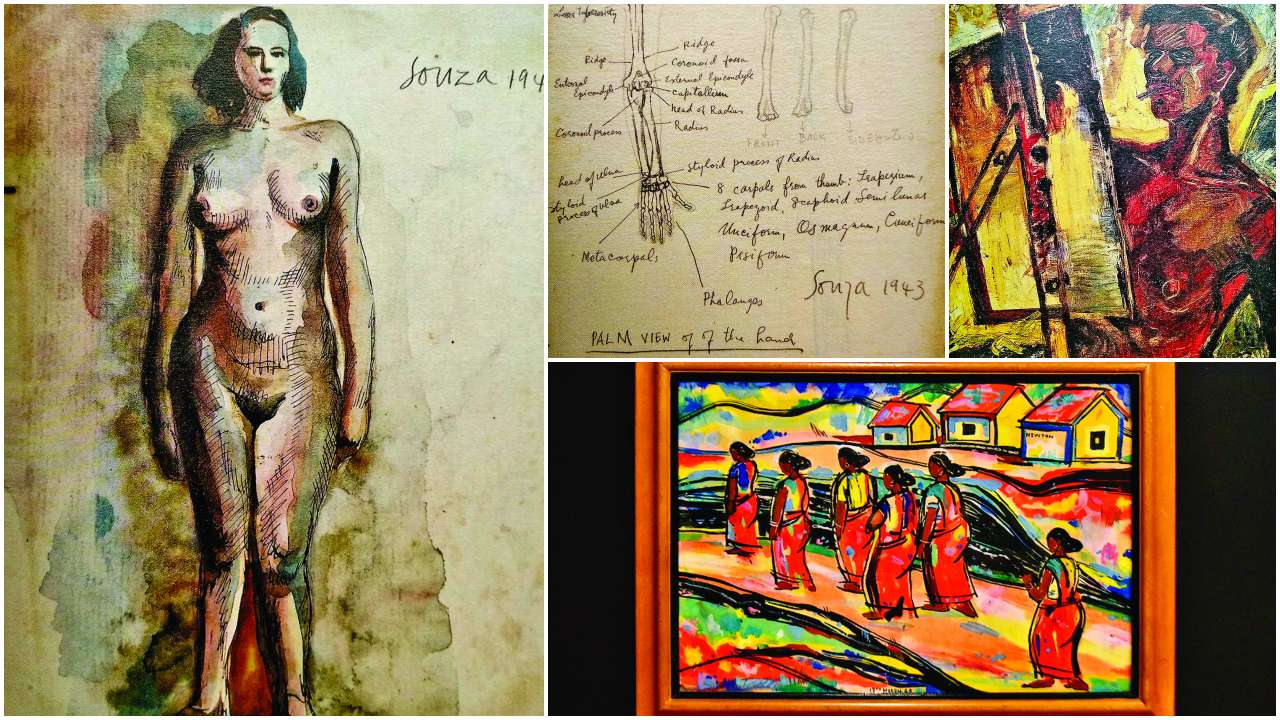
In the exhibition catalogue of his solo show at the Bombay Art Society, November 1948, Francis Newton Souza, who was then just an upcoming artist, almost gloats, "...Shelley was expelled once, Van Gogh was expelled once. Ostrovsky was expelled once. Palme Dutt was expelled once. I was expelled twice. Recalcitrant boys like me had to be dismissed by principals and directors of educational institutions who instinctively feared we would topple their apple-carts."
And 'Souza in the 40's' is an ongoing exhibition of his 150 paintings and sketches that allude to the time when 'rebel' became his middle name and when he was still finding his style as an artist. This is a tripartite exhibition, where the works are distributed between three viewing spots – the Grosvenor Gallery in London (January 25, 2019), Sunaparanta in Panaji (March 5, 2019) and Saffronart's gallery at The Oberoi, New Delhi (January 18, 2019). Artist Francis Newton Souza painted these through the 1940s, till he went to study art in London.
The Goa-born Bombay bred artist with Portuguese roots, raised by a seamstress mother single-handedly in an overtly-Catholic lower-middle class household and scarred by chicken pox, were just some of his many frustrations. In 1939, Jesuit-run St Xavier's College gave him the boot for his pornographic drawings in the toilet. In 1945, the Sir JJ School of Art expelled him for pulling down the Union Jack flag and participating in the Quit India Movement. Then, joined the Communist Party who let his co-founded Progressive Art Group meet at their office, and painting what reflected their ideology such as the poor – proletariat to expose the villains – capitalists. But abandoned it when he felt they were using him, and finally left India.
Between the three exhibition venues, the shaky emergence of the artist's style is visible from his female nudes influenced by a Khajuraho sculptures, debauchery moments, self portraits, bucolic Goa and its peasant class. Few rare sights: oil works where Souza painted MF Husain at the canvas (1947) and the latter did a similar portrait of Souza (1950); the blue-steeple portrait titled Ave Maria (1942), which Maria Figueiredo, his mother's assistant and later his wife, purchased for `48.
A surprise are his detailed diagrams of the human anatomy. Like the 'Palm view of the Hand', in which he's marked the eight carpals of the wrist: scaphoid, lunate, triquetral, pisiform, trapezium, trapezoid, capitate, and hamate. But not in the right spellings or order – an easy way to memorise this is, 'Some Lovers Try Positions That They Can't Handle'. Considering his various dalliances, the code would've made Souza chuckle.
Also on view are press clippings that announce his initial shows, and both critique and hail his unorthodox, controversial style. Mentionable is the 1948, art historian Dr Hermann Goetz's essay in Marg which he titled 'Rebel Artist FN Souza', that discusses why Souza was such a non-conformist and showed all the promise of being a genius, despite having "shocked many who cannot imagine a green or blue-red human body… or … the frank statement of sex which is sublimized not by suppression but by association and interplay with the experiences of the soul." Even art critic Geeta Kapur in her 1978 book, 'Contemporary Indian Artists', recalls how the Souza readily associated with Communist Party because "being by temperament a fighter every pang of humiliation he felt as an individual or as a 'native' roused him to retaliation and attack. He converted his fighting spirit into revolutionary politics..."
Conor Macklin, Director, Grosvenor art gallery, says anatomy was part of the JJ curriculum, which Souza enjoyed because it was taught by an MD of JJ's medical school and not an art professor. Which Souza loved, unlike 18-century outdated British watercolour and still life techniques, also in the syllabus, because Macklin feels, "...just a presumption that a few interested, including Souza, were invited to the lab to understand dissecting..."
Macklin, for whom Souza is a favourite, feels the Progressive artist enjoyed being a rebel. "I think it was part of his nature to rebel about whatever he did. When India rose against the British rule and its academic style of painting, Souza rose to the challenge. He was the one who'd arrange the meetings to start the Progressive Art Group or take down the Bombay art society. He was the one who sparked the fire," says Macklin, who likes the challenge of working on an artist like Souza, who was "a misfit and very misunderstood."